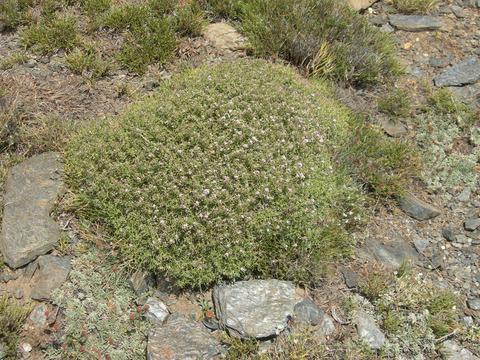Our official English website, www.x-mol.net, welcomes your feedback! (Note: you will need to create a separate account there.)
Foundation species promote local adaptation and fine‐scale distribution of herbaceous plants
Journal of Ecology ( IF 5.5 ) Pub Date : 2020-07-02 , DOI: 10.1111/1365-2745.13461 Michael J. O'Brien 1, 2 , Elisa P. Carbonell 3, 4 , Gianalberto Losapio 5 , Philipp M. Schlüter 6 , Christian Schöb 4
中文翻译:

基础物种促进草本植物的局部适应和精细分布
更新日期:2020-07-02
Journal of Ecology ( IF 5.5 ) Pub Date : 2020-07-02 , DOI: 10.1111/1365-2745.13461 Michael J. O'Brien 1, 2 , Elisa P. Carbonell 3, 4 , Gianalberto Losapio 5 , Philipp M. Schlüter 6 , Christian Schöb 4
Affiliation

|
- Interactions among neighbours can alter demography and traits of commingled species via adaptation or plasticity in phenotypic expression, and understanding these two mechanisms in diverse communities is important for determining the ecological and evolutionary consequences of plant–plant interactions.
- We reciprocally transplanted perennial species (Arenaria armerina and Festuca indigesta) among patches of two foundation shrub species and open ground to assess whether origin microsite (defined as the spatially distinct abiotic and biotic conditions associated with the two shrubs and open ground) determines germination, recruitment and growth that, in turn, promotes fine‐scale distribution of species among microsites. In addition, we tested the effect of origin microsite on traits, competitive ability, drought tolerance and outlier loci to assess whether origin microsite conditions drove differences in traits, strategies and adaptive loci.
- Germination was consistently greater for seeds planted back into their origin microsite relative to seeds sourced from foreign microsites, although this effect was weakened for recruitment. Plant growth was best in open sites regardless of origin microsite. In the greenhouse, A. armerina had conserved traits within origin microsite but distinct trait values among origins, specifically plants from the most productive microsite (e.g. sufficient light, high nutrients and improved water availability) had distinct trait values. Festuca indigesta had conserved trait responses among microsites while within microsite, individuals had significant trait plasticity to different environmental conditions. The combined field and greenhouse results suggest that fine‐scale distributions are supported by local adaptation among microsites of A. armerina and phenotypic plasticity of F. indigesta.
- Synthesis. Adaptation or plasticity in phenotypic expression has different implications for demographic rate and persistence of species in changing environments. Local adaptation to neighbours suggests that reductions in foundation species diversity could concomitantly lead to reduced genetic diversity of commingled species while a plastic response indicates a more robust and broad response to changing climatic and biotic conditions.
中文翻译:

基础物种促进草本植物的局部适应和精细分布
- 邻居之间的相互作用可以通过表型表达的适应性或可塑性改变人口统计学和混合物种的性状,而了解这两种机制在不同群落中对于确定植物与植物相互作用的生态和进化后果至关重要。
- 我们将多年生物种(Arenaria armerina和Festuca indigesta)相互移植到两个基础灌木物种和开阔地的斑块之间,以评估起源微地点(定义为与两个灌木和开阔地有关的空间上不同的非生物和生物条件)是否决定了发芽,募集和增长反过来促进了微型站点之间物种的精细分布。此外,我们测试了原始微站点对性状,竞争能力,耐旱性和离群基因位点的影响,以评估原始微站点条件是否驱动了性状,策略和适应性基因座的差异。
- 相对于从国外微型站点获得的种子,播种回其原始微型站点的种子的发芽率始终更高,尽管这种作用在招募中被削弱了。不论原产地是微地点,植物在开放地点的生长均最佳。在温室中,A。armerina的性状在原产地内保持不变,但在产地之间具有不同的性状值,特别是来自生产力最高的微产地的植物(例如,充足的光照,高养分和改善的水利用率)具有不同的性状值。羊茅在微地点之间保持性状响应,而在微地点内部,个体对不同环境条件具有显着的性状可塑性。田间和温室的综合结果表明,细微的分布得到了A. armerina微地点之间的局部适应和F. indigesta的表型可塑性的支持。
- 综合。表型表达的适应性或可塑性对人口变化率和物种在不断变化的环境中的持久性具有不同的影响。对邻居的局部适应表明,基础物种多样性的减少可能同时导致混合物种遗传多样性的降低,而塑性响应表明对变化的气候和生物条件有更强健和广泛的响应。

























 京公网安备 11010802027423号
京公网安备 11010802027423号